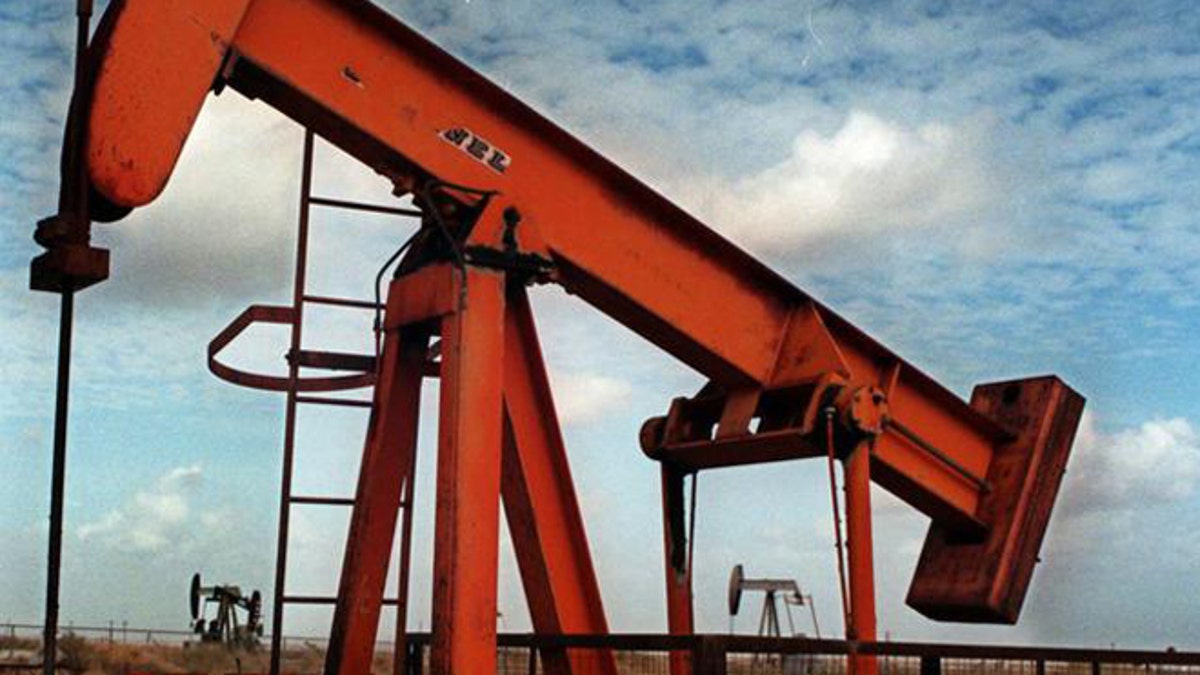
FILE: Undated: An oil pump in California (AP)
A vast, untapped oil reserve in California is emerging as perhaps one of the state’s best opportunities to improve its still struggling economy, but exploration and production efforts face resistance from the powerful environmental lobby and Gov. Jerry Brown’s administration, which appears not fully sold on the potential.
The roughly 1,700 square-mile Monterey Shale, from the state’s central coast to its San Joaquin Valley, holds roughly 60 percent of the country’s estimated shale oil reserves, potentially making California the country’s top oil producer and revving up its economy like a smaller shale-oil deposit did for North Dakota.
California’s economy has been showing signs of improvement after a downward slide for years – in part the result of myriad regulations, multi-billion dollar budget deficits, high unemployment and now Democratic Gov. Jerry Brown’s income-tax hike on the state’s highest earners that has some vowing to leave.
“The Monterey Shale could be a boon to the economy, but there’s heavy emphasis on the word ‘could,’ ” said Jason Marshall, chief deputy director for the state’s Department of Conservation.
Geoffrey Styles, energy consultant, recently wrote in the online forum The Energy Collective that drilling the formation “could slash California's imports while adding billions of dollars a year to the local economy and to the shaky state budget, along with lots of good jobs.”
Oil production in the region is still largely in the speculation or developmental phases. Oil companies purportedly have been working the region’s complex structure since the early 1990s, but only recently have new technologies made large-scale extractions economically possible.
Environmentalists are primarily opposed to the companies having to tap the estimated 15. 4 billion barrels in the Monterey Shale by deep, horizontal drilling and hydraulic fracturing, which has helped drive the country’s recent shale oil and gas boom but also raised environmental worries.
They also argue such techniques will be especially tricky in that region, considering its complex geological formation, created in part by the San Andreas fault.
“There are some really serious concerns for California,” said Kassie Siegel, a lawyer for the Center for Biological Diversity.
She said two of the group’s biggest worries are the potential to trigger an earthquake and water contamination, consider that fracking includes injecting a mix of water, sand and chemicals into rock to release oil or natural gas.
She said fracking uses millions of gallons of water in a state “starved for water” and the latest methods use “slick water” that includes hundreds of potential harmful chemicals.
“There are many, many aspects to the water issue,” Siegel said. “And California is a very seismically active area.”
Oil companies have engaged in fracking in California for decades without heavy monitoring by state regulators. But that situation appears to be swiftly changing with the state releasing a draft of fracking rules in December with plans to have a complete set of regulations within the year, Marshall told FoxNews.com.
He also acknowledged the importance of oil in the state economy, pointing out that California in 2011 produced nearly 197 million barrels. But he also expressed Brown administration concerns similar to those of the environmentalists -- protecting state resources and whether fracking will work in the already-fractured formation.
“It may take (more) advancement in technology or methodology to unlock the oil-production potential of the formation,” Marshall said.
To be sure, California already has a long, boom-to-bust history with oil that started in 1865 with a discovery east of San Francisco and includes the great boom of 1894 around Los Angeles.
Though the state is still the country’s fourth-largest oil producer -- behind Texas, North Dakota and Alaska -- production has declined since roughly the mid-1980s.
Occidental Petroleum and Venoco are already working the Monterey Shale region with Hess Corp. purportedly among the other major oil companies making a foray – amid a real estate boom and middlemen snapping up leases for acres held by the Bureau of Land Management.
“We’ve seen a significant increase in the last three to five years in the price paid from our sales,” said Gabriel Garcia, a field manager at the agency’s Bakersfield office, recently told The New York Times. “Some of that has to do with speculation on new technologies, and some of that has to do with the high price of oil.”
























